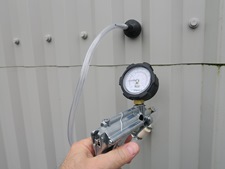Roof Fixings
During your dilapidations or condition surveys, attention should be paid to the fixings.
Look closely at most industrial roofs, whether they are metal or asbestos cement and you’re likely to find a defect.
If you’re acting on behalf of a landlord on a dilapidations claim, the state of the fixings could result in your claim being considerably higher than itmight have been.
When acting on behalf of an in-going tenant and preparing a schedule of condition, then identifying some common fixing defects could save your client from an aggressive claim at the end of their lease.
Roof Fixings – what to look for
Roof fixings are probably more important than you think, because on older roofs in particular, they are often missing their protective caps, the seals may be perished or perhaps the fixings themselves are corroded and weakened. Sometimes they are obviously dislodged, particularly on ridge fixings and in some cases, some fixings might be missing altogether.
These types of defects are pretty obvious if you know to always look for them.
There are a number of types of fixing available, but depending on who has been maintaining a roof, unsuitable fixings might be present in places. We often see cases where a stitcher fixing (known as a secondary fastener to give it the proper name) has been used in place of a longer primary fixing or fastener. These are usually obvious because they quickly become dislodged, so will probably be sitting proud of the roof sheets or details.
Another thing to look for is indentations in the roof sheets where a fixing has been over-tightened. This can become problematic in time, because the indentation in the roof sheet can cause water to pond around the fixing. If the indentation is bad, the fixing might not sit correctly on the washer seal, allowing water to ingress. The source of this type of roof leak is difficult to identify, because the water will track down the roof to the lowest point, which could be some distance away from the defective fixing.
For those who really want to go to town on their dilapidations claims, investing in a vacuum pressure testing gauge could be very worthwhile and repay itself in no time. This will help identify whether the fixing seal is working or not. By taking representative readings across a roof, you should be able to work out whether any defects are isolated or what proportion of seals are defective.
A magnet is another useful tool.
In many cases, stainless fixings are specified by manufacturers because they last considerably longer than their carbon steel equivalents. In some cases, only stainless fixings should be used. Carbon steel fixings are magnetised, whereas stainless are not.
A good reference for building surveyors is the MCRMA guide, “Fasteners for Metal Roof and Wall Cladding: Design, Detailing and Installation Guide.”
If you don’t have time to look for this type of defect, or are not sure about what exactly to look for, we suggest you employ the services of an independent industrial roof surveyor.
How To Seal Defective Fixings
There may be occasions where it’s not economical to replace large numbers of defective fixings on a metal or asbestos roof. Assuming the fixings are structurally sound, Liquasil’s Non-Sag Sealer can be applied to each fixing as part of a roof coating project. If you can find a contractor just to attend to the fixings, they can also be sealed independently of a roof coating, though this would not qualify for warranty.


